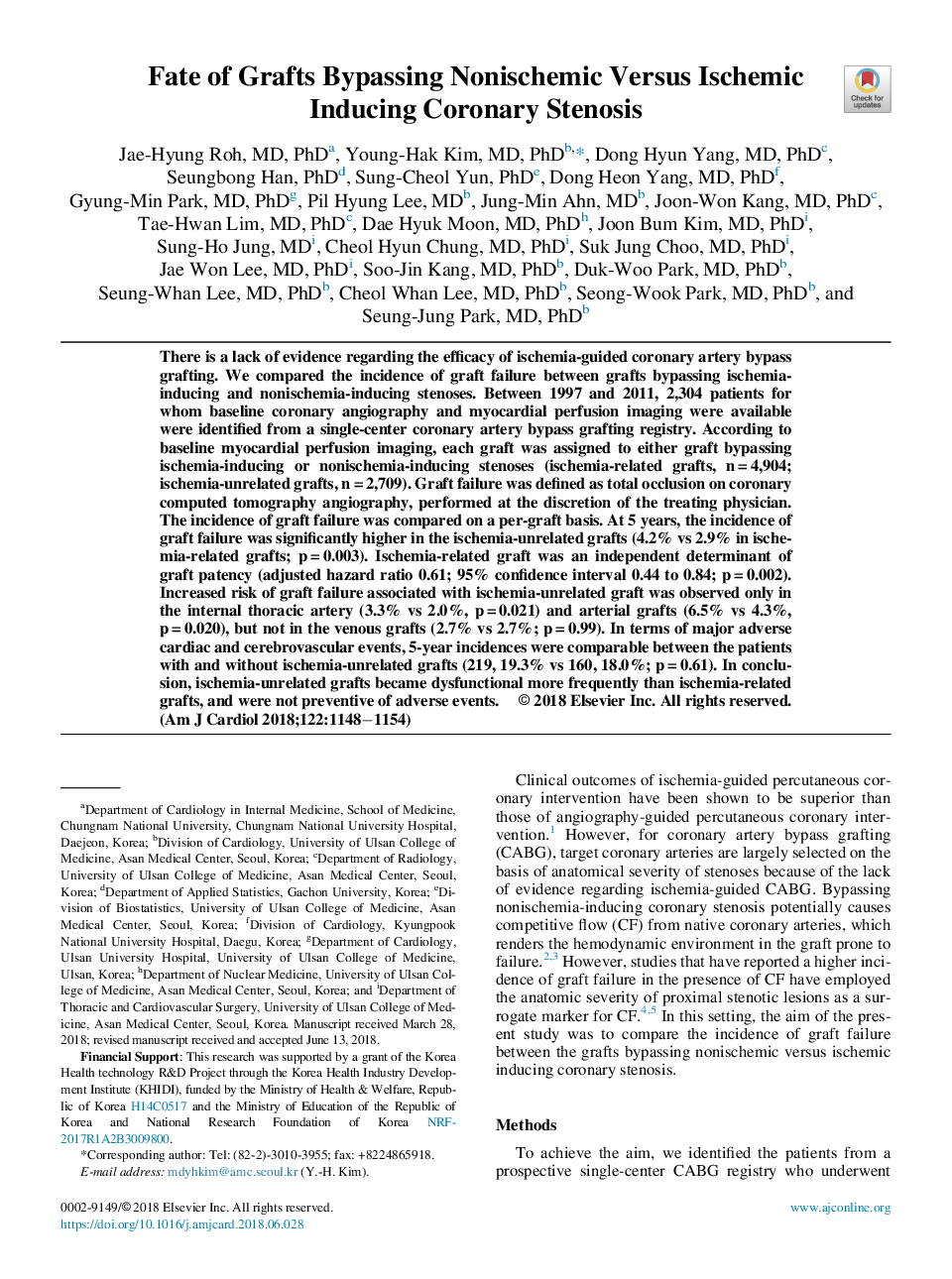| Article ID | Journal | Published Year | Pages | File Type |
|---|---|---|---|---|
| 11015174 | The American Journal of Cardiology | 2018 | 7 Pages |
Abstract
There is a lack of evidence regarding the efficacy of ischemia-guided coronary artery bypass grafting. We compared the incidence of graft failure between grafts bypassing ischemia-inducing and nonischemia-inducing stenoses. Between 1997 and 2011, 2,304 patients for whom baseline coronary angiography and myocardial perfusion imaging were available were identified from a single-center coronary artery bypass grafting registry. According to baseline myocardial perfusion imaging, each graft was assigned to either graft bypassing ischemia-inducing or nonischemia-inducing stenoses (ischemia-related grafts, nâ¯=â¯4,904; ischemia-unrelated grafts, nâ¯=â¯2,709). Graft failure was defined as total occlusion on coronary computed tomography angiography, performed at the discretion of the treating physician. The incidence of graft failure was compared on a per-graft basis. At 5 years, the incidence of graft failure was significantly higher in the ischemia-unrelated grafts (4.2% vs 2.9% in ischemia-related grafts; pâ¯=â¯0.003). Ischemia-related graft was an independent determinant of graft patency (adjusted hazard ratio 0.61; 95% confidence interval 0.44 to 0.84; pâ¯=â¯0.002). Increased risk of graft failure associated with ischemia-unrelated graft was observed only in the internal thoracic artery (3.3% vs 2.0%, pâ¯=â¯0.021) and arterial grafts (6.5% vs 4.3%, pâ¯=â¯0.020), but not in the venous grafts (2.7% vs 2.7%; pâ¯=â¯0.99). In terms of major adverse cardiac and cerebrovascular events, 5-year incidences were comparable between the patients with and without ischemia-unrelated grafts (219, 19.3% vs 160, 18.0%; pâ¯=â¯0.61). In conclusion, ischemia-unrelated grafts became dysfunctional more frequently than ischemia-related grafts, and were not preventive of adverse events.
Related Topics
Health Sciences
Medicine and Dentistry
Cardiology and Cardiovascular Medicine
Authors
Jae-Hyung MD, PhD, Young-Hak MD, PhD, Dong Hyun MD, PhD, Seungbong PhD, Sung-Cheol PhD, Dong Heon MD, PhD, Gyung-Min MD, PhD, Pil Hyung MD, Jung-Min MD, Joon-Won MD, PhD, Tae-Hwan MD, PhD, Dae Hyuk MD, PhD, Joon Bum MD, PhD, Sung-Ho MD, Cheol Hyun MD,
